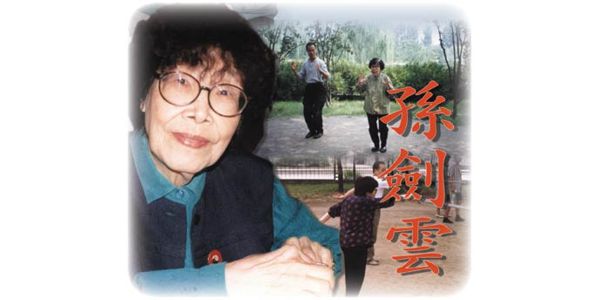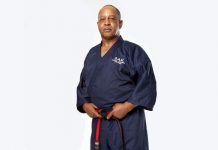
On October 22nd, National Oceanic and Atmospheric Administration’s (NOAA) Space Environment Center in Boulder, Colorado detected a large sunspot ten times larger than the earth. A sunspot (or solar flare) generates geomagnetic disturbances, akin to an electromagnetic pulse from nuclear fallout. It can disrupt electronics, wireless systems and satellites. This is just the kind of thing we like to hear around here at magazine submission deadline time. After all, this is the 21st century and everything is done digitally, especially magazine printing. The digital realm, despite its user friendliness, is fragile and unforgiving, especially for deadlines during sunspots. The last thing we needed was to have the sun blast our precious files. Adding to our woes, two of our workhorse computers were getting really buggy. The constant assault of computer viruses coupled with the everyday demands of our graphic department takes its toll. Of course, one of the buggy ones was the hard drive where we store our next issue. There’s nothing like the stress of deadlines to get your mind racing.
Now, most people have this romantic mental image of publishing where it functions like a smoothly-oiled machine: reporters busily reporting, fashion models coming in for photo shoots, editors screaming “stop the presses!” every once in a while. How I wish this was true (especially the fashion models). In reality, it’s anything but. If you’ve ever seen Jackie Chan’s 1980 masterpiece, The Young Master (in my opinion, one of Jackie’s top kung fu flicks ever), there is this scene where he is attacked by a mob of sword-wielding sheriffs. Jackie starts juggling swords and sheriffs with that chaotic Chan-only choreographic style. It’s a wonderful scene, an example of that singular magic that is a good Jackie Chan fight scene. Well, working at Kung Fu magazine is a lot like that. Swords are flying around like crazy and you’ve got to constantly hop, skip and jump, flip, aerial and butterfly-kick just to keep that deadline from chopping off your head.
It seldom gives us time to reflect. Sure, a peaceful mind in battle is what martial arts is all about, but the day-to-day reality of coping with work stress can overwhelm any moment of serenity. It’s easy to wax poetic about the warrior’s mind, but when the fight is more mundane – dull tasks like proofreading or formatting – it’s hard to be heroic. According to meditation practice, tranquility is achieved by staying in the moment. This is tricky for us since — in the magazine world — a moment is multiple places in time. For example, right now as I write this to you, it’s the day after daylight savings time started (October 27th, 2003), which is chronologically disorienting enough. But in my mind it is March/April of 2004, because that’s the issue we’re working on now. It is also November and December 2003 since that’s the issue currently on stands, as well as January and February 2004 since that’s the issue at print. And you thought daylight savings was a headache.
Despite deadlines, sunspots and temporal misperceptions, there are always calms in the storms, just like there is always yin in yang. And in one of those brief moments we received sad tidings. One of my Sidai, who goes by “hasayfu” on our forum, sent me a PM of Grandmaster Sun’s passing. We called some of her friends to confirm, but even some grandmasters like Wu Bin and Wang Jurong had not heard the heartbreaking news. Our forum knew first. So, in the final hours of the last issue’s production, I assembled an obituary for her for our January/February 2004 issue (at print now). Ducking under those “deadline” swords, I didn’t really have time to think about it much. I did my job and moved on to the next one.
Grandmaster Sun was the third obituary for a personal grandmaster that I’ve had to print in my short watch here at Kung Fu magazine. The first was Shaolin Monk, Venerable Shi Suyun for our Spring 2000 Shaolin Special. I had only met Suyun once, very fleetingly in 1999. I visited him in his private chambers at Shaolin Temple, hoping to do an interview. When I arrived, He was resting in his dark room. In his mid seventies, he still sat in a perfect lotus position, even as he rested. Unfortunately by then, his health was already failing and he declined to be interviewed, saying politely, “It hurts to talk.” I spent a few moments with him, and then had to move on.
The second was Shiu Ying, published in our January/February 2003 issue. She was the wife of Hung Gar Grandmaster Chiu Kau. I once learned Butterfly Palm, a northern form attributed to Shiu Ying and included in some Hung Gar curriculums. I only dabbled in that style, and that obituary was actually contributed by Chu Chi Ling, her son. I had no real connection to her, save for that set I once learned but have since forgotten.
Now Grandmaster Sun was different. In the summers of 1995 and 1996, I took some private lessons directly with her. Space only permits small obituaries, and we received comments from some masters who are far more illustrious and intimate with Grandmaster Sun than me, so I just collated a report of her passing. Perhaps this is another reason why it didn’t affect me so much at the time. But after we made our submission deadline, that sunspot made me think of Grandmaster Sun again. Ever since, I’ve been trying to remember what she tried to teach me on those hot summer afternoons in a Beijing park. I’ve been trying to remember what she meant to the martial world and what she meant to me personally.
I first learned Sun style Tai Chi from Sibak Paul Tam. He had studied Bak Sil Lum (BSL – or “northern shaolin” and noted that the Tai Chi form which had been handed down the BSL lineages as “Sun style” was really a modified Yang style. It looked nothing like the actual Sun style. In fact, Sun Lutang, Sun Jianyun’s father, did swap techniques with BSL grandmaster Ku Yu Cheong. But that was before he fully developed his own distinctive Sun style by fusing Tai Chi theory with Xingyi and Bagua principles. So, like so many things in Chinese Martial Arts, the BSL lineages were both correct and incorrect in transmitting that Tai Chi form as “Sun style.” Sibak Tam sought out Grandmaster Sun Jianyun and became her disciple. Tam was a valiant proponent of Sun style, but he had limited English, so few Americans know of him, much less trained with him. He is the unsung hero of Sun style in the BSL circles, since now many BSL practitioners have also gone back to retrieve and incorporate Sun style into their already vast curriculum. To the best of my knowledge, Tam was the first to do this. If it wasn’t for him, the BSL Sun Tai Chi would still be just a modified Yang.
I met Grandmaster Sun for the first time in Beijing in the summer of 1995. I was returning from a month of training at Shaolin Temple, passing through Beijing. She was amazingly accessible, unlike many of the other grandmasters, which still impresses me considering her stature. Sun Jianyun was one of the Top Ten Most Famous Martial Arts Masters. I previously mistranslated this as “Top Ten Grandmasters” instead of “Most Famous,” and I’m sad to say that this mistranslation has perpetuated. My bad. In fact, I was still calling them the Top Ten Grandmasters when I listed them all in an article on another member of the Top Ten club, Grandmaster Liang Yiqian. That was in our January/February 2002 issue. It wasn’t until our recent November/December 2003 issue, when I did a sequel to the Liang article, that I realized my mistake and corrected it. In that second article, you can read the actual Chinese for yourself and make your own translation. My apologies for any confusion this might have caused. I’m still imperfect. Eventually I’ll get it right. Maybe not in this lifetime, but eventually. At least I corrected myself. Anyway, I had the good fortune to train under Grandmaster Sun again in the summer of 1996, this time on the way to Shaolin Temple. And in December/January 1997 I wrote my first article for Kung Fu magazine ever; it was about Sun Taiji. Two years later, I wrote a sequel article upon request of former editor Martha Burr for our July 1999 Tai Chi Special. I haven’t written anything about Sun style since, at least not until the Grandmaster’s obituary.
I won’t claim that I was close to Grandmaster Sun. Nor did I know her very well at all. Others might make that claim now, but honestly, I only spent a few days with her. I took a few private lessons and shared a few meals at her home. She was this little old Chinese lady – a calligrapher, a painter, a vegetarian and a swordswoman. Sun was also a survivor of war, political intrigue, the Cultural Revolution and the immense suffering of China over the last century. She wasn’t immune to old age, sometimes relying on her loyal disciples to assist her when walking on difficult terrain. But when she recited her Bagua, she was fast — unbelievably fast. Bagua was really her strongest suite. It was shocking to witness firsthand. To think that this little old lady could sidestep and get behind you so quickly while in her mid-eighties was an absolute inspiration.
I last saw Grandmaster Sun in 1998. She was giving a special seminar for a tour group. I was co-leading that tour with my BSL Sifu Wing Lam. Grandmaster Sun only oversaw the lessons while one of her disciples actually did the teaching. The lessons were given in a crumbling martial arts auditorium, an abandoned building of the Beijing Sports center that was destined to be demolished. It was once a beautiful performance hall, sort of a dinner-and-martial-arts-show tourist trap that failed. Now, it was a broken garbage heap and a very surreal setting for a study hall. I don’t remember the lesson at all. By that time, the stress of co-leading a tour had gotten the better of me and I was travel sick with Mao’s revenge. I only remember my feverish desperation as I ran out of toilet paper in the dilapidated squat toilet of the Sports center. In my depleted condition, and in that weird trashed training space, I couldn’t even meet the grandmaster’s eyes. I just wanted to go back to the hotel room and rest. It’s not a shining final memory, but it’s what remains. You’ve not really been to China without such a memory.
But instead of that, I will remember Grandmaster Sun for those hot days in Beijing, practicing privately with her in the little park near her tiny apartment. I regret never doing a formal interview with her. She was a wealth of knowledge and experience – and the closest I have ever come to a true “source” – just one generation from the founder. In her eighties, her eyes always shined brightly, even from behind her grossly thick glasses. And she had a smile that covered her entire face, a joyful smile that beamed radiantly. She was also quick to discipline her students, often setting up foreigners like myself as examples to her more intimate pupils. I remember her once trying to make a point to me; Sun leapt at one of her disciples, brandishing her sword, challenging her to defend herself using the proper Sun sword technique. In the fray, blood was drawn, just a drop, on Grandmaster Sun’s sword hand. Everyone was embarrassed. Her disciple was aghast. But Sun just wrapped her hand in a kerchief and went right on with the lesson. After all she’d been through – those countless trials over the last eight decades – a little shed blood was nothing, even in front of some hapless foreign student.
I foresee that I’ll be writing more obituaries, not just for distant martial relatives but for more people that I’ve known and trained under. Such is the cycle of life and death. It makes me eager to interview more old masters, to capture and preserve their legacies before they are lost for eternity. It also increases my disdain for the petty squabbling and political posturing that plagues Chinese martial arts all the more. So much ego, so little substance, such a short time to be here. Grandmaster Sun certainly had her share of political problems, as did any master who went through the Cultural Revolution. Now that she’s gone on, that all seems like a dream. And yet her style — or rather, her father’s style — remains.
Writing obituaries is a grim reality. As we get older and more responsible, we begin to see our connections to the community at large and undertake such tasks as an unpleasant yet essential errand. We also begin to truly understand the greatness of the old masters. This is because we see firsthand how age ravages our physical bodies. You need to increase your level of respect for any old master on an exponential rate for each decade past you that they have lived. Grandmasters like Sun Jianyun are truly exceptional. They are brilliant examples of what a human can achieve with a lifetime. And as the sun sets on their lives, they are more beautiful than words can say.
When I began this ezine eulogy, I was going to conclude with some analogy as to the ephemeral quality of sunspots and life. But that’s not really fair, since Sun’s intention was that her work – her father’s work – would carry on. Ultimately, if her life’s work is to be measured as a success in her own eyes, it must hinge on the perpetuation of Sun style Tai Chi. Often when a Grandmaster passes, there is political turmoil in the wake. Foreseeing this, Sun did name a successor to be the 3rd generation lineage holder, Master Sun Yuntong. Additionally, she had many disciples who are qualified to teach. Personally, I don’t feel qualified to teach Sun style yet and I’m not sure that I ever will. The only thing I have to give back to her is to honor her with my crude writings in hopes that it helps promote her beloved art. Sun style is the youngest of the Big Five Tai Chi families and the least recognized. If you can’t find a teacher, there are plenty of other resources that disseminate Sun teachings, like instructional videos. I’m sure that if there’s one thing Grandmaster Sun would want me to say on her behalf here, it would be to try Sun style Tai Chi. It might not be your cup of tea, but you should at least be able to recognize it as easily as you would recognize Yang or Chen style. In the world of martial arts, the more knowledge you have of other styles, the more your own style will be empowered. I can still see how the Grandmaster’s eyes twinkled after she managed to transmit a tiny spark of Sun style into my unworthy mortal coil in the Beijing heat. I’m sure it twinkles for everyone like that whenever they grasp at a spark of Sun. Those eyes will twinkle for you too, if you just try to learn it a little.
Written by Gene Ching for KUNGFUMAGAZINE.COM
© COPYRIGHT KUNGFUMAGAZINE.COM, ALL RIGHTS RESERVED.
All other uses contact us at gene@kungfumagazine.com




